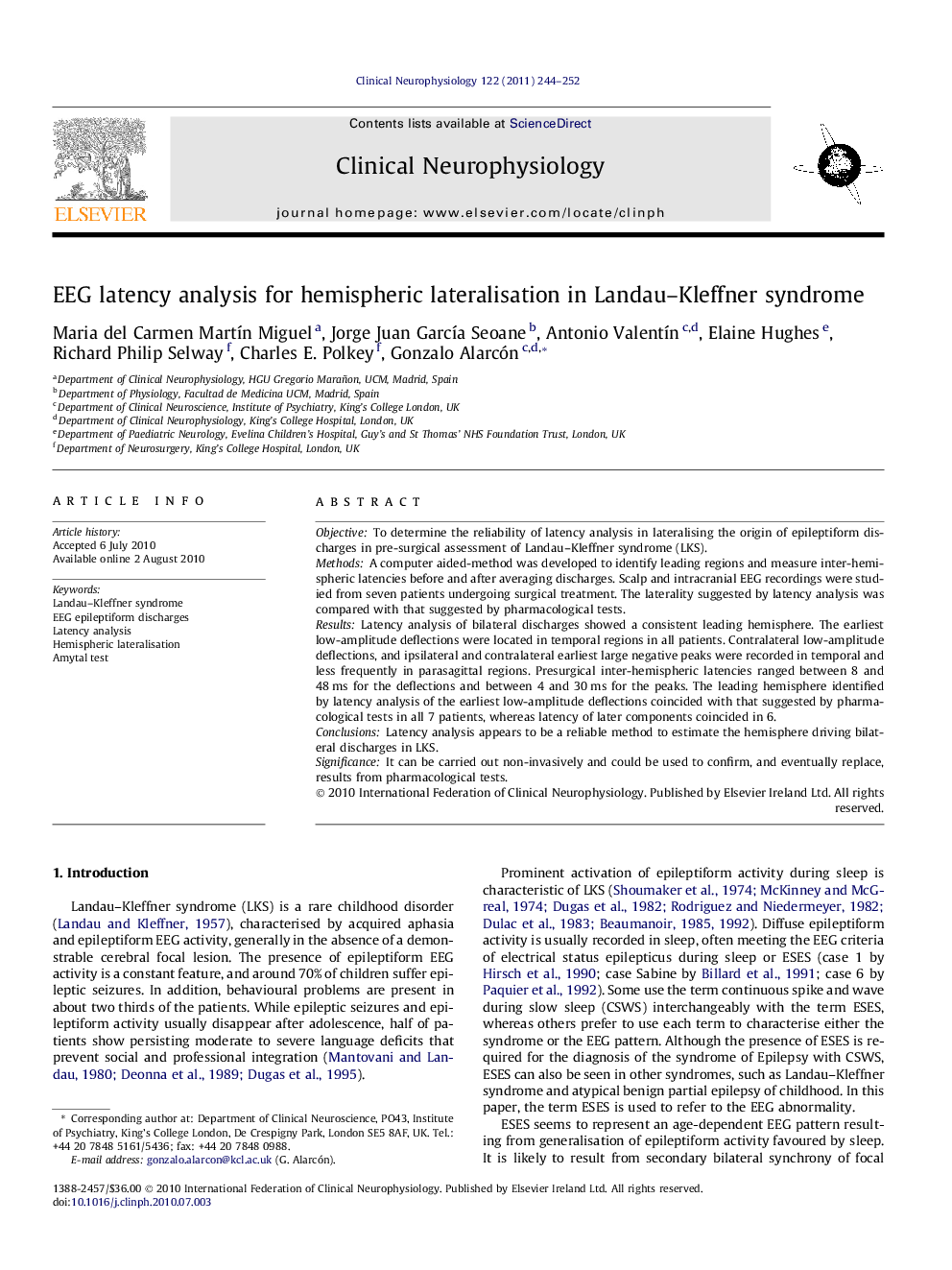| Article ID | Journal | Published Year | Pages | File Type |
|---|---|---|---|---|
| 3044977 | Clinical Neurophysiology | 2011 | 9 Pages |
ObjectiveTo determine the reliability of latency analysis in lateralising the origin of epileptiform discharges in pre-surgical assessment of Landau–Kleffner syndrome (LKS).MethodsA computer aided-method was developed to identify leading regions and measure inter-hemispheric latencies before and after averaging discharges. Scalp and intracranial EEG recordings were studied from seven patients undergoing surgical treatment. The laterality suggested by latency analysis was compared with that suggested by pharmacological tests.ResultsLatency analysis of bilateral discharges showed a consistent leading hemisphere. The earliest low-amplitude deflections were located in temporal regions in all patients. Contralateral low-amplitude deflections, and ipsilateral and contralateral earliest large negative peaks were recorded in temporal and less frequently in parasagittal regions. Presurgical inter-hemispheric latencies ranged between 8 and 48 ms for the deflections and between 4 and 30 ms for the peaks. The leading hemisphere identified by latency analysis of the earliest low-amplitude deflections coincided with that suggested by pharmacological tests in all 7 patients, whereas latency of later components coincided in 6.ConclusionsLatency analysis appears to be a reliable method to estimate the hemisphere driving bilateral discharges in LKS.SignificanceIt can be carried out non-invasively and could be used to confirm, and eventually replace, results from pharmacological tests.
